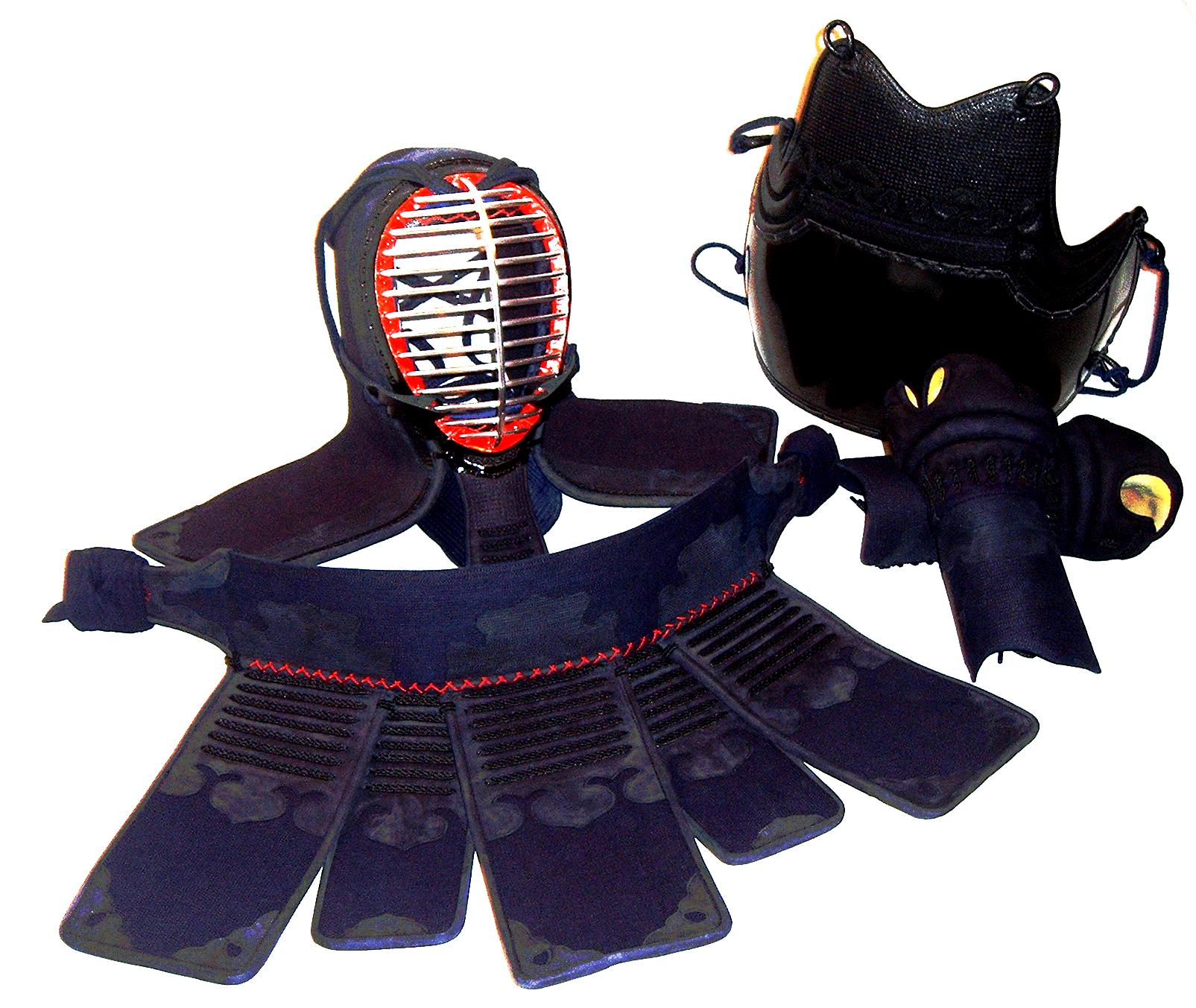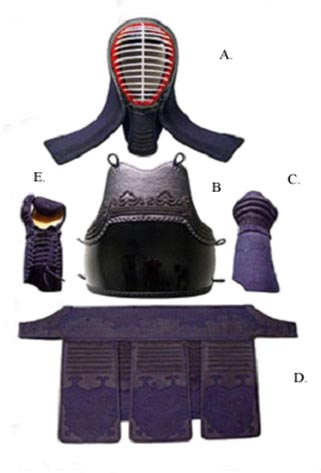|
Bōgu
, properly called , is training armour used primarily in the Japanese martial arts, Japanese martial art of kendo,Uchida, M. (2005)Kendo Bogu (Protective Equipment)(October 2005). Retrieved on 12 May 2010. (2002). Retrieved on 12 May 2010. with variants used for jūkendō, tankendo, and naginatajutsu, naginata. History During the Edo period (1603-1868) the use of real swords for training purposes was discouraged due to injuries, with wooden practice swords in the form of and were often used instead. To further reduce injuries, practice armour based on traditional samurai armor was developed, with this practice armour being the basis for the modern .Description and use The word consists of two parts: , meaning "protect" or "defend," and , meaning "equipment" or "tool."[...More Info...] [...Related Items...] OR: [Wikipedia] [Google] [Baidu] [Amazon] |
Japanese Martial Arts
Japanese martial arts refers to the variety of martial arts native to the country of Japan. At least three Japanese terms (''budō'', ''bujutsu'', and ''bugei'') are used interchangeably with the English phrase Japanese martial arts. The usage of the term ''budō'' (武道) to mean martial arts is a modern one: historically the term meant a way of life encompassing physical, spiritual and moral dimensions with a focus on self-improvement, fulfillment or personal growth. The terms ''bujutsu'' (武術) and ''bugei'' (武芸) have different meanings from ''budō'', at least historically speaking. ''Bujutsu'' refers specifically to the practical application of martial tactics and techniques in actual combat. ''Bugei'' refers to the adaptation or refinement of those tactics and techniques to facilitate systematic instruction and dissemination within a formal learning environment. History Each child who grew up in a samurai family was expected to be a warrior when he gre ... [...More Info...] [...Related Items...] OR: [Wikipedia] [Google] [Baidu] [Amazon] |
Bogu
Bogu may refer to: People * Bogu Kailai (born 1958), Chinese lawyer and businesswoman * Bögü Qaghan, third khagan of Uyghurs Places * Bogu (state) Other * Bōgu, Kendo training armour * Bogu kumite in Bōgutsuki Karate Bōgutsuki Karate (防具付き空手 or ぼうぐつきからて, eng. ''Karate with Bōgu, Armour'') is one of the competition formats of Karate. It is also known as bōgu karate (防具空手, Armour Karate), bōgu-tsuki shiai (防具付試合), ... * Bogu kumite in Seikichi Odo {{dab ... [...More Info...] [...Related Items...] OR: [Wikipedia] [Google] [Baidu] [Amazon] |
Kote
Kote may refer to: Arts and entertainment * Kote (film), ''Kote'' (film), a 2011 Indian Kannada-language film * a title character in the 1919 Georgian comic opera ''Keto and Kote'' and the 1949 film adaptation of the same title * KOTE, a country music radio station in Eureka, Kansas, United States * Kindred of the East (KotE), a tabletop role-playing game book and game line released in 1998 People * Konstantine Kote Abkhazi (1867—1923), Georgian prince, major-general, politician and anti-Soviet nationalist * Konstantine Gabashvili (born 1948), Georgian politician and diplomat, Minister of Education (1992—1993), Mayor of Tbilisi (1993) * Konstantine Kote Kubaneishvili, 20th-21st century Georgian poet * Constantine Kote Makharadze (1926–2002), Soviet and Georgian actor and sports commentator * Konstantine Kote Marjanishvili (1872–1933), Georgian theater director * Kote Tsintsadze (1887–1930), Georgian Bolshevik politician * Kote Tugushi (born 1983), Georgian basketball coach ... [...More Info...] [...Related Items...] OR: [Wikipedia] [Google] [Baidu] [Amazon] |
Hogu
Hogu (호구, 護具) is the armor worn by practitioners of Taekwondo and Geomdo during sparring and competition. Translated into English, ''hogu'' means chest or chest protector. The ''hogu'' has been used in World Taekwondo sparring since the 1950s and is considered the most important piece of sparring equipment in the Taekwondo practitioner's arsenal. The ''hogu'' is the most common scoring area in Taekwondo sparring. The ''hogu'' is hit by the heel, the sole and the top of the foot by many kicking techniques like the roundhouse kick or the back kick, and can also be hit with the fist. ''Hogu''s are made by various companies such as Adidas and Dae Do; only certain brands of chest protector are approved by World Taekwondo. The chest protector is mandatory in World Taekwondo- or Olympic-style competition; however, it is not used in International Taekwon-Do Federation-style sparring. In Korean Geomdo, hogu refers to the armor worn by practitioners during sparring. It is simila ... [...More Info...] [...Related Items...] OR: [Wikipedia] [Google] [Baidu] [Amazon] |
Naginatajutsu
is the Japanese martial art of wielding the . The naginata is a weapon resembling the European glaive and the Chinese Guandao, guan dao. Most naginatajutsu practiced today is in a modernized form, a ''gendai budō'', in which competitions also are held. History Origins The ''naginata'' originates from development of the Japanese spear called ''hoko yari'' of the later 1st millennium AD. It has been suggested that it developed along the same lines as Okinawan kobudō weapons as a modified farming tool. Others say that creative samurai in need of a longer weapon attached a sword to a pole. Perhaps the simplest explanation is the natural development of polearms. Polearms are intended as mass weapons, to be used not just by individual warriors, but by formations of soldiers together on field battles and not for dueling. When fighting in close order, two-handed cut-and-thrust weapons, such as halberds and glaives, are much more efficient than mere spears or swords because of their v ... [...More Info...] [...Related Items...] OR: [Wikipedia] [Google] [Baidu] [Amazon] |
:Category:Japanese Words And Phrases ...
{{Commons Words and phrases by language Words Words Words A word is a basic element of language that carries meaning, can be used on its own, and is uninterruptible. Despite the fact that language speakers often have an intuitive grasp of what a word is, there is no consensus among linguists on its ... [...More Info...] [...Related Items...] OR: [Wikipedia] [Google] [Baidu] [Amazon] |
Japanese Martial Arts Equipment
Japanese may refer to: * Something from or related to Japan, an island country in East Asia * Japanese language, spoken mainly in Japan * Japanese people, the ethnic group that identifies with Japan through ancestry or culture ** Japanese diaspora, Japanese emigrants and their descendants around the world * Japanese citizens, nationals of Japan under Japanese nationality law ** Foreign-born Japanese, naturalized citizens of Japan * Japanese writing system, consisting of kanji and kana * Japanese cuisine, the food and food culture of Japan See also * List of Japanese people * * Japonica (other) * Japanese studies , sometimes known as Japanology in Europe, is a sub-field of area studies or East Asian studies involved in social sciences and humanities research on Japan. It incorporates fields such as the study of Japanese language, history, culture, litera ... {{disambiguation Language and nationality disambiguation pages ... [...More Info...] [...Related Items...] OR: [Wikipedia] [Google] [Baidu] [Amazon] |
Kendo Bōgu
is a modern Japanese martial art, descended from kenjutsu (one of the old Japanese martial arts, swordsmanship), that uses bamboo swords (shinai) as well as protective armor (bōgu). It began as samurai warriors' customary swordsmanship exercises, and today, it is widely practiced within Japan and has spread to many other nations across the world. History Swordsmen in Japan established schools of ''kenjutsu'' (the ancestor of kendo). These continued for centuries and form the basis of kendo practice today.. Formal kendo exercises known as ''kata'' were developed several centuries ago as ''kenjutsu'' practice for warriors. They are still studied today, in a modified form. The introduction of bamboo practice swords and armor to sword training is attributed to during the Shotoku Era (1711–1715). Naganuma developed the use of this armor and established a training method using bamboo swords. , third son of Naganuma and the eighth headmaster of the Kashima Shinden Jikishi ... [...More Info...] [...Related Items...] OR: [Wikipedia] [Google] [Baidu] [Amazon] |
Dōjō
A is a hall or place for immersive learning, experiential learning, or meditation. This is traditionally in the field of martial arts. The term literally means "place of the Way" in Japanese. History The word ''dōjō'' originates from Buddhism. Initially, ''dōjō'' were adjunct to temples and were formal training places for any of the Japanese arts ending in "''-dō''", from the Chinese '' Dao'', meaning "way" or "path". Sometimes meditation halls where Zen Buddhists practice ''zazen'' meditation were called ''dōjō''. The alternative term '' zen-do'' is more specific, and more widely used. European ''Sōtō Zen'' groups affiliated with the International Zen Association prefer to use ''dōjō'' instead of ''zendo'' to describe their meditation halls as did their founding master, Taisen Deshimaru. In Japan, any facility for physical training, including professional wrestling, may be called a ''dōjō''. In the Western world, the term ''dōjō'' (when related to phys ... [...More Info...] [...Related Items...] OR: [Wikipedia] [Google] [Baidu] [Amazon] |
Tare
Tare or Tares may refer to: * Tare (armour), a leg and groin protector used in a number of Japanese martial arts * Tare (legume), several plants of the legume family * Tare (surname), a surname * Tare (tufted grass), a genus of nine species of tufted grasses * Tare, Rwanda * Tare River, in Romania * Tare sauce, a Japanese dipping sauce * Tare weight, the weight of an empty vehicle or container * Tares, Iran * ''Vicia sativa'', a plant also known as the tare * Parable of the Tares, a parable of Jesus, referring to tares (flowering plants) as weeds {{disambiguation, plant ... [...More Info...] [...Related Items...] OR: [Wikipedia] [Google] [Baidu] [Amazon] |
Fiberglass
Fiberglass (American English) or fibreglass (English in the Commonwealth of Nations, Commonwealth English) is a common type of fibre-reinforced plastic, fiber-reinforced plastic using glass fiber. The fibers may be randomly arranged, flattened into a sheet called a chopped strand mat, or woven into glass cloth. The plastic Matrix (composite), matrix may be a thermoset polymer matrix—most often based on thermosetting polymers such as epoxy, polyester resin, or vinyl ester resin—or a thermoplastic. Cheaper and more flexible than Carbon-fiber-reinforced polymers, carbon fiber, it is stronger than many metals by weight, non-magnetic, non-conductive, transparent to electromagnetic radiation, can be molded into complex shapes, and is chemically inert under many circumstances. Applications include aircraft, boats, automobiles, bath tubs and enclosures, swimming pools, hot tubs, septic tanks, water tanks, roofing, pipes, cladding, orthopedic casts, surfboards, and external door skins ... [...More Info...] [...Related Items...] OR: [Wikipedia] [Google] [Baidu] [Amazon] |






